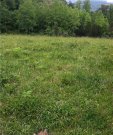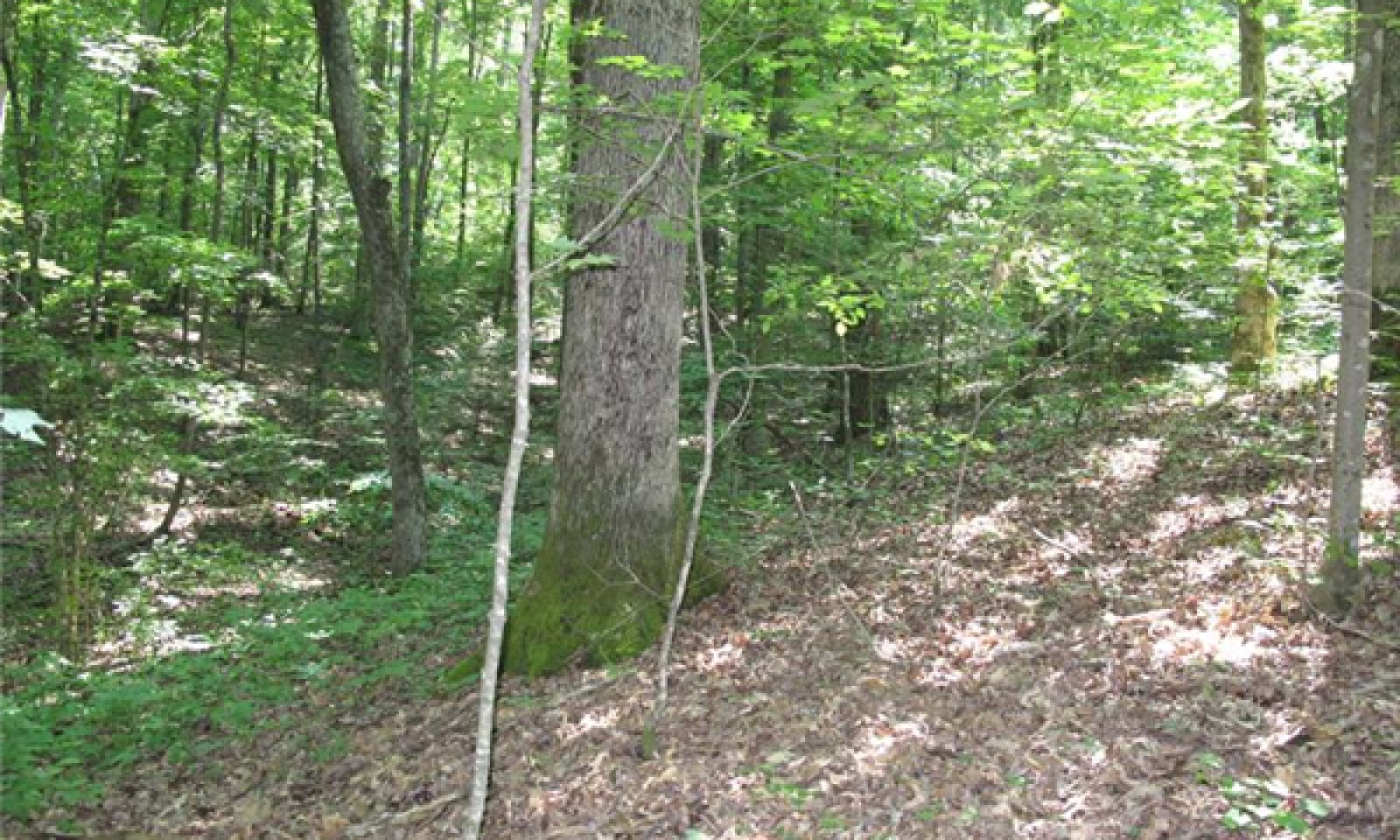
Thermic Cherty Dolomite Upland Oak-Hickory Forest
Scenario model
Current ecosystem state
Select a state
Management practices/drivers
Select a transition or restoration pathway
- Transition T1A More details
- Transition T1B More details
- Transition T1C More details
- Transition T1D More details
- Restoration pathway R2A More details
- Restoration pathway R3A More details
- Restoration pathway R4A More details
- Transition T4A More details
- Restoration pathway R5B More details
- Transition T5A More details
- Restoration pathway R5A More details
- Transition T6A More details
-
No transition or restoration pathway between the selected states has been described
Target ecosystem state
Select a state
State 1
Reference State - Upland Oak/Hickory Forest


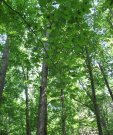



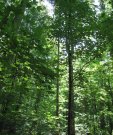

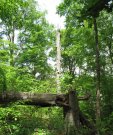
Description
The reference state for this ecological site is characterized by a closed-canopy hardwood forest dominated by oaks and hickories. In order for this reference state to be maintained, the oak/hickory species must be present in multiple age classes. In most cases red maple, sugar maple and American beech are colonizing the midstory and understory. A species composition shift toward these more mesophytic species is widely recognized throughout the eastern United States (McEwan et al., 2011).
The reference state described here represents a condition dependent on complex, multiple disturbances, some of which are human caused. In order to get oak to succeed and recruit into the next stand, advanced oak regeneration must be present before a major canopy disturbance. Oaks must be able to reach a size that is competitive (through smaller-scale disturbances such as fire or herbicide of midstory, or tree planting with vigorous seedlings or saplings), then there needs to be a canopy disturbance. There may need to be additional disturbances to get rid of competition.
Submodel
State 2
High-graded Forest State
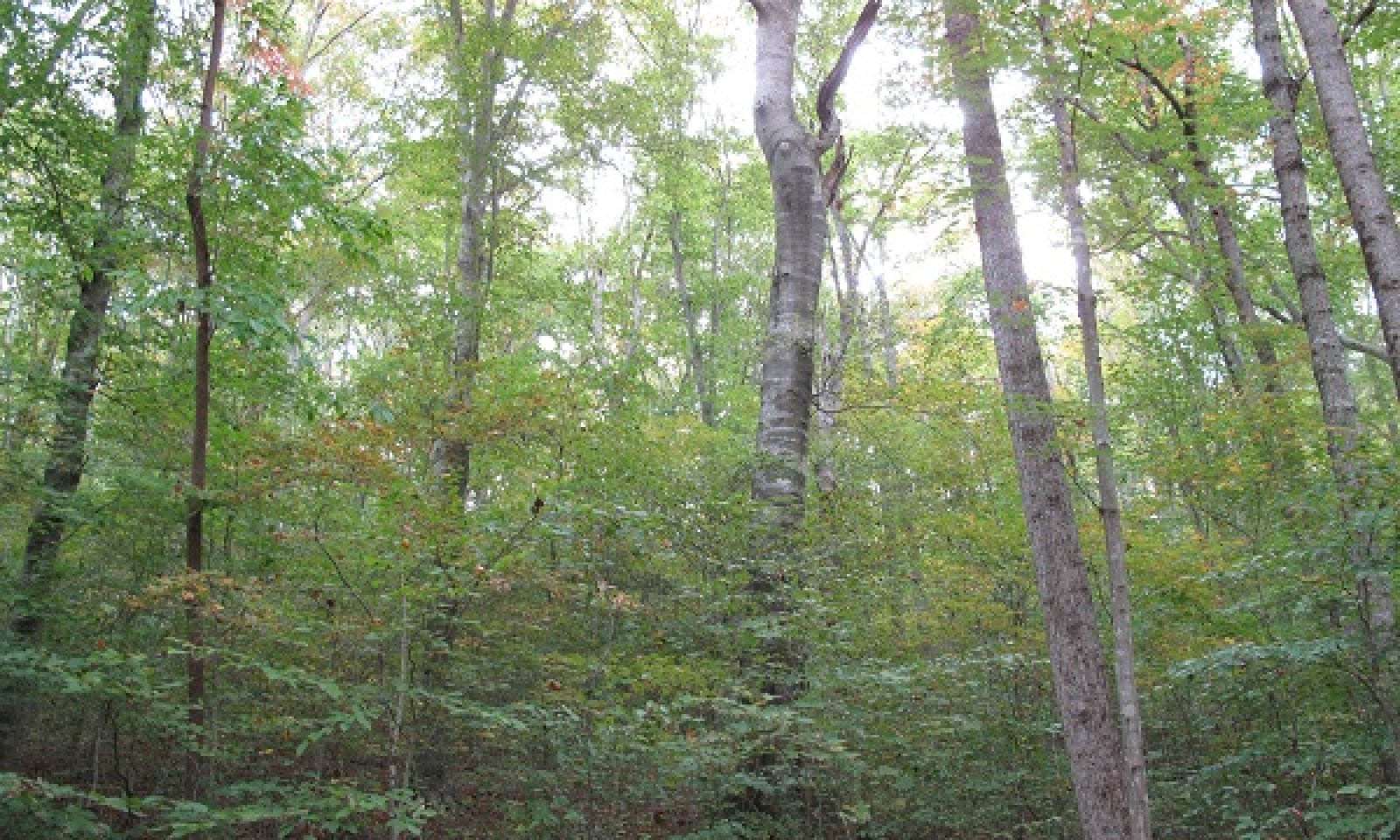



Description
Forests in the high graded state have been logged using diameter-limit cut methods multiple times in most cases. This results in a stand with undesirable species composition, low vigor, and poor health. The genetic quality of the forest has been depleted due to the best trees being taken out over time.
While oak and hickory species are often still present in this state, individual trees are often "wolfy" and defective. These are the trees that would have been undesirable from a timber perspective and so left after multiple entries of logging. Notably, hickory has often been left because sawmills historically did not have the capability to process them.
Submodel
State 3
Post Large-scale Disturbance Forest State







Description
Stand initiating disturbances such as a clearcut result in a young, regenerating, even-aged forest stand.
Submodel
State 4
Grazed Forest State
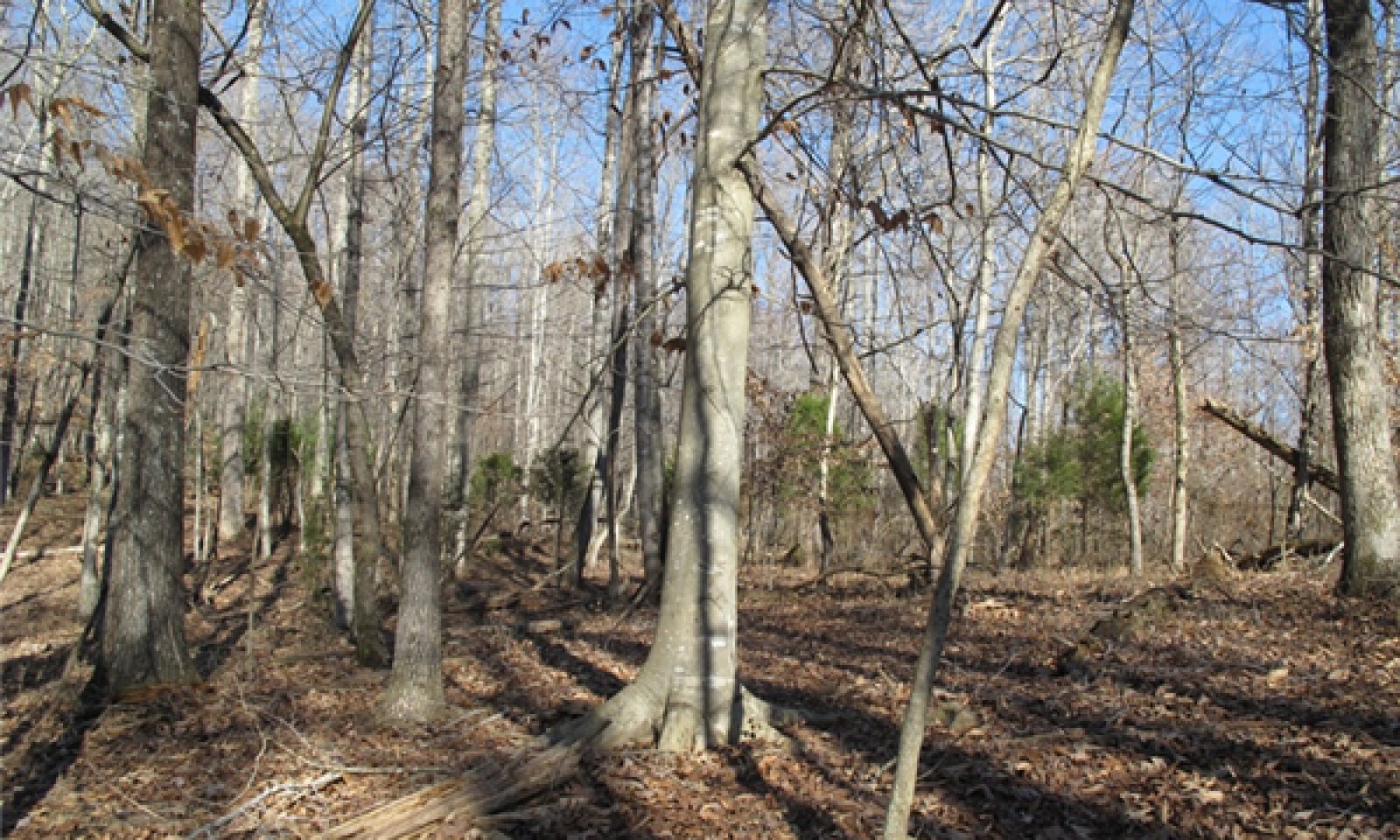



Description
This state represents a condition resulting from uncontrolled access to a forest by livestock and is not meant to address plant community changes as a result of prescribed grazing, which can be quite different.
Submodel
State 5
Post Agricultural Abandonment Forest State
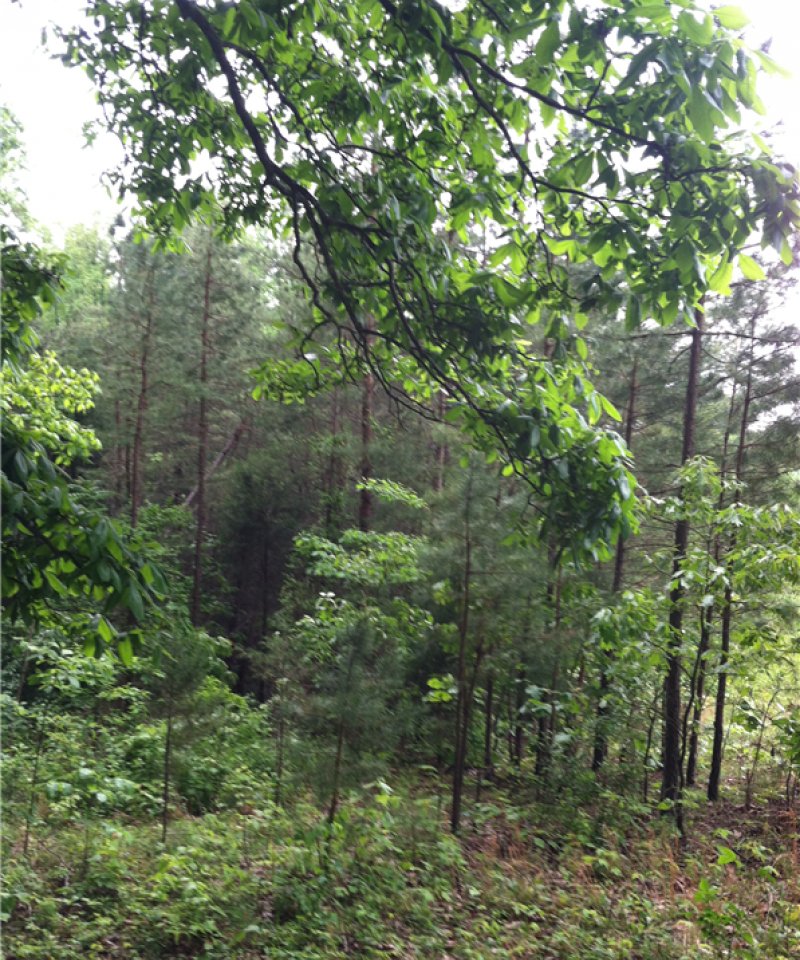




Description
This state results from natural succession to forest after abandonment of agricultural fields. The resulting forest will vary depending on the amount of time the land was in cultivation, the type of agricultural practice that was used (e.g., row crops, pasture, type of crop, etc.), and the degree of impact to the soil.
In Georgia, parts of this state have been converted to loblolly pine (Pinus taeda) plantations, but that acreage is of relatively small extent and so it is not included as a community phase.
Submodel
Description
This state represents a once-forested area now cleared for pasture. Most pastures are very old and have been established for a long time. Management practices focus primarily on maintaining healthy pasture conditions rather than new pasture establishment, although that is certainly an option. Balancing stocking rates, grazing rotation, and nutrient inputs are the primary management concerns.
In general, pasture management recommendations focus on maximizing desirable forage species to outcompete undesirable or weedy species. Production practices that result in overgrazing and low fertility levels favor emergence, propagation, and growth of weeds (Green et al., 2006). Effective pasture management includes the following practices:
- maintaining proper soil pH and fertility levels
- using controlled grazing practices
- mowing at proper timing and stage of maturity
- allowing new seedlings to become well established before use, and
- renovating pastures when needed (Green et al. 2006).
Tennessee has developed a list of desirable species, intermediate species and undesirable species for use in a Pasture Condition Scoresheet, which can be used to develop management recommendations on a site by site basis. District Conservationists as well as the State Grazing Specialist can be consulted to assist in developing management recommendations.
Perilla (Perilla frutescens) mint is an exotic, invasive weed that has become a major problem in many pastures. It causes more cattle deaths (in Tennessee) than any other toxic plant (Steckel and Rhodes, 2007). Keeping a ready supply of quality feed available for farm animals in the late summer and early fall will help to minimize the risk to livestock. Cattle will not normally feed on perilla unless there is a shortage of other feed.
Submodel
Mechanism
Selective harvesting and high grading multiple times results in degradation of forest stand quality in terms of altered species composition, forest structure, and genetic fitness. Diameter limit cuts, incorrectly implemented, remove the biggest and best trees and leave those of lowest quality in terms of both timber and ecology.
Transition T1B


Mechanism
Large-scale, stand replacing disturbance (natural or human-caused) such as a catastrophic fire, tornado, ice storm or management practices such as clearcutting will result in the majority of the overstory being removed. This effectively hits the reset button on natural succession and the stand begins to regenerate.
Advanced oak regeneration must be present for oak to be well represented in the next stand. In some cases, competition control will also be necessary.
Mechanism
Uncontrolled access by livestock and subsequent browsing and selective removal of desirable trees can result in loss of hardwood tree species and invasion by invasive, exotic plants. In some cases, soil compaction and erosion can become a problem.
Mechanism
Forest clearing, herbicide application, and establishment of pasture plants, hay or crops will convert forested stands to a grassland state. Most pastures in this site are old and were converted many years ago.
Restoration pathway R2A


Mechanism
Stand initiating disturbance such as a silvicultural clearcut, tornado, major ice storm or in rare cases, a really hot wildfire, will effectively push the "reset" button on succession, allowing superior stock to regain dominance in most cases. Disturbance loving species like the oaks will typically respond well to this. However, where seed banks and seed sources are severely depleted, oaks may need to be planted if they are desirable. Fire has varying effects, depending on the intensity of the fire and stand conditions prior to burning. Typically, pine species would initially colonize burned areas before other species.
Relevant conservation practices
| Practice | External resources |
|---|---|
|
Early Successional Habitat Development/Management |
|
|
Forest Stand Improvement |
|
|
Forest Management Plan - Written |
|
|
Forest Management Plan - Applied |
Restoration pathway R3A


Mechanism
Favor desirable species such as the oaks by treating sprouts and seedlings or saplings of undesirable species (i.e., red maple) with herbicide. Multiple herbicide treatments may be merited. Follow-up treatments such as thinning or crop tree release might be needed, depending on management objectives and stand conditions.
Relevant conservation practices
| Practice | External resources |
|---|---|
|
Forest Stand Improvement |
|
|
Forest Management Plan - Written |
|
|
Forest Management Plan - Applied |
Restoration pathway R4A


Mechanism
Remove livestock, control weedy species, and conduct site-based forest management over time. In most cases, natural succession will occur if invasive plants, including Eastern red cedar, are controlled. Tree planting with desirable species may often be merited. In most cases, time and natural processes will heal any soil compaction caused by grazing.
Relevant conservation practices
| Practice | External resources |
|---|---|
|
Fence |
|
|
Tree/Shrub Site Preparation |
|
|
Tree/Shrub Establishment |
|
|
Forest Stand Improvement |
|
|
Invasive Plant Species Control |
|
|
Forest Management Plan - Written |
|
|
Forest Management Plan - Applied |
Mechanism
Mechanical vegetation control and herbicide application will likely be needed to keep exotic plant species from becoming problematic in newly established pastures. Seeding with desirable species and fertilizing will be necessary to establish pasture conditions. Rotational grazing can be used as a management tool to achieve goals.
Restoration pathway R5B


Mechanism
Allowing natural succession to take place over time will most often result in a mixture of oak and pine, which will eventually turn into an oak/hickory mixed stand. In some cases, exotic plant control (mechanical, chemical, etc.) may be merited. Where necessary, oak planting or planting some other desirable species could be beneficial. If planting is done, control of competition through several mechanical and chemical treatments may be necessary for the best results.
Transition T5A


Mechanism
When pine naturally colonizes abandoned agricultural land, the result can be establishment of overstocked pine stands (~40 years). These stands are attractive to southern pine beetle, which has naturally occurring outbreaks in the Southeast periodically. Pine beetle kills result in loss of pine in the overstory (Dale 1990) and can be stand replacing in some cases.
Restoration pathway R5A

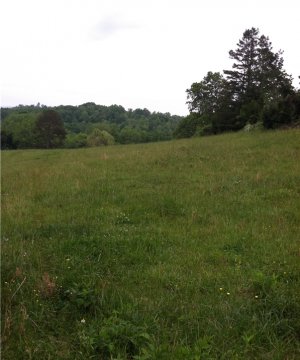
Mechanism
Land clearing, seeding, fertilizing, and prescribed grazing on a site by site basis will help push the phase back to pasture. Control of invasive exotic plant species and poison ivy may be merited. Control methods typically include herbicide application and mechanical control, such as mowing.
Model keys
Briefcase
Add ecological sites and Major Land Resource Areas to your briefcase by clicking on the briefcase (![]() ) icon wherever it occurs. Drag and drop items to reorder. Cookies are used to store briefcase items between browsing sessions. Because of this, the number of items that can be added to your briefcase is limited, and briefcase items added on one device and browser cannot be accessed from another device or browser. Users who do not wish to place cookies on their devices should not use the briefcase tool. Briefcase cookies serve no other purpose than described here and are deleted whenever browsing history is cleared.
) icon wherever it occurs. Drag and drop items to reorder. Cookies are used to store briefcase items between browsing sessions. Because of this, the number of items that can be added to your briefcase is limited, and briefcase items added on one device and browser cannot be accessed from another device or browser. Users who do not wish to place cookies on their devices should not use the briefcase tool. Briefcase cookies serve no other purpose than described here and are deleted whenever browsing history is cleared.
Ecological sites
Major Land Resource Areas
The Ecosystem Dynamics Interpretive Tool is an information system framework developed by the USDA-ARS Jornada Experimental Range, USDA Natural Resources Conservation Service, and New Mexico State University.


